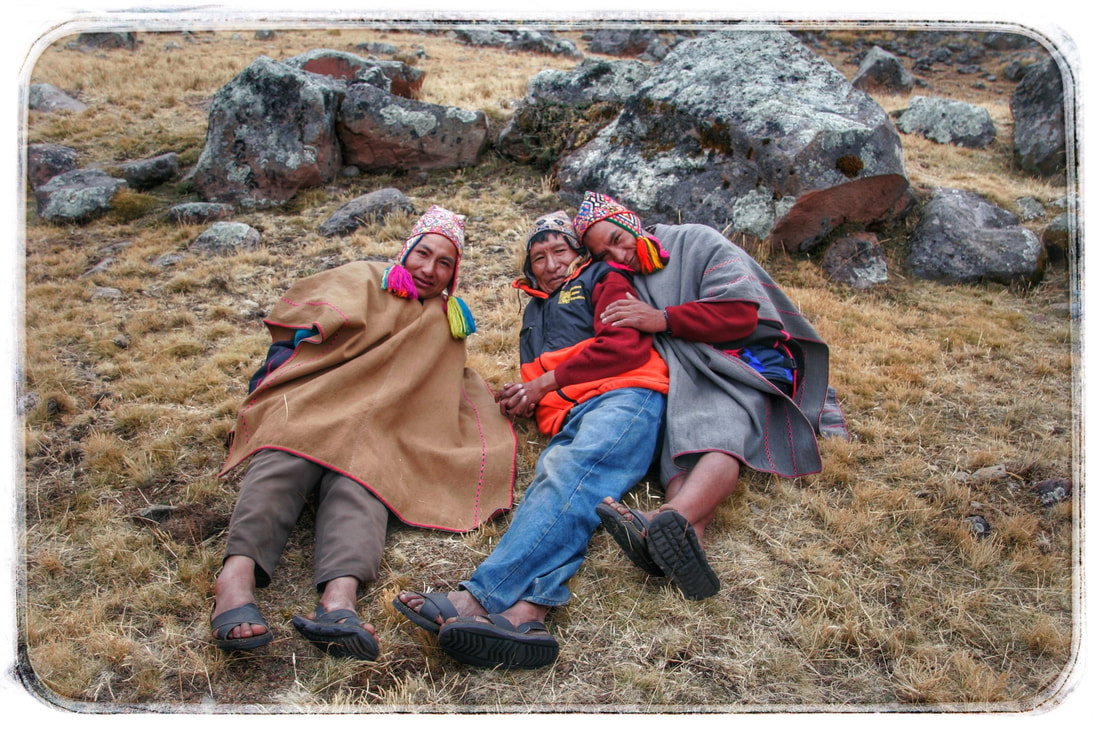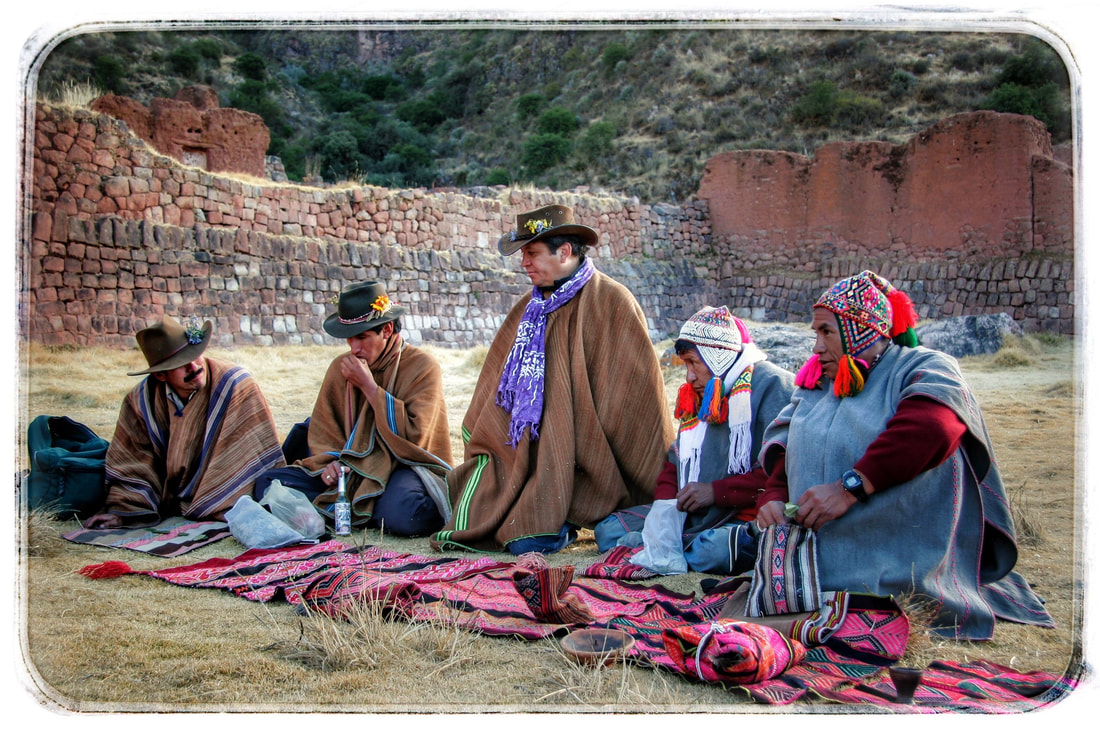| Everything is damp from moisture in the overnight air. Thankfully, the horsemen bring hot cups of matte de coca and coffee to our tents. This morning, though clouds still linger, it is thankfully not raining. After washing up in icy cold water and brushing my teeth, it's time for a hearty hot breakfast. |
Afterwards, Eva and I take turns stuffing gear into our duffle bags and daypacks. Soon our campsite is filled with upside down tents drying in the morning air before being packed away for later.
Our hike, to Huchy Q’osqo, we learn was re-directed based upon a dream Adolpho had last night. The horse wranglers confirm that a spring he “saw” does exist by the village of Pukamarca. It is to this spring that we head.
Our hike, to Huchy Q’osqo, we learn was re-directed based upon a dream Adolpho had last night. The horse wranglers confirm that a spring he “saw” does exist by the village of Pukamarca. It is to this spring that we head.
After an hour or so, we glimpse the village of Pukamarca in the distance.
When we reached the spring (paqarina), we found a small frog. Sitting around the spring eating snacks, our morning discussion commenced:
|
“Let’s do a haipay,” Adolpho suggested, “and call this pukio as well as the pukio that is within us all!” Within moments, bags of coca leaves are pulled out and we feed each other k’intus with our prayers that the river within flows long and strong, and leave one k’intu each at the spring.
After thanking the spring and the local man, we continued our hike towards Huchy Q’osqo. Before entering the canyon, we stopped on a large escarpment to do another haipay ceremony.
The canyon is beautiful, an old Inka "road" cuts through it along a small creek. Adrille assisted us on the steep descent by playing his recorder. At the base of the canyon, we stopped to look for nesting condors. Unfortunately, we didn’t see any. Once through the canyon, the road traverses a mountainside that runs parallel to the Urubamba River that is hundreds of feet below. Height challenged, this portion of the hike is teeth-clenching. Summoning the memberships I hold in my mesa, I calmed myself and proceeded with confidence.
Huchy Q’osqo is an archeological site that is also referred to as Little Cuzco. It is also the mythical home of Wiracocha. Merta and Adrille took us on a short tour of the site, with its gorgeous views, while lunch was prepared.
After lunch, we organized our tents in readiness for nightfall and relaxed.
Another exhausting day — on all levels — and filled with so much to ponder. After our despachos were burned, I headed off to the warmth of my sleeping bag.
During the night, I lucid dreamed. In the dream, JL has been tasked, by Spirit, with bringing the altomesayoq cosmology into contemporary Western articulation In doing so, the cosmology shifted towards sourcing directly from cosmic consciousness by unifying the feminine and masculine expressions into one ... 1+1=1. In my dream I saw a large dial, like a sundial, which was engraved with many symbols. An unseen “hand” moved the dial, which was pointing towards a shape that resembled a child’s drawing of mountains, to the right at a symbol denoting the Pleiades constellation. What does this mean? Medicine people would instruct me not to suffer pre-mature evaluation. For now, this will marinate in my subconsciousness.
During the night, I lucid dreamed. In the dream, JL has been tasked, by Spirit, with bringing the altomesayoq cosmology into contemporary Western articulation In doing so, the cosmology shifted towards sourcing directly from cosmic consciousness by unifying the feminine and masculine expressions into one ... 1+1=1. In my dream I saw a large dial, like a sundial, which was engraved with many symbols. An unseen “hand” moved the dial, which was pointing towards a shape that resembled a child’s drawing of mountains, to the right at a symbol denoting the Pleiades constellation. What does this mean? Medicine people would instruct me not to suffer pre-mature evaluation. For now, this will marinate in my subconsciousness.


 RSS Feed
RSS Feed
